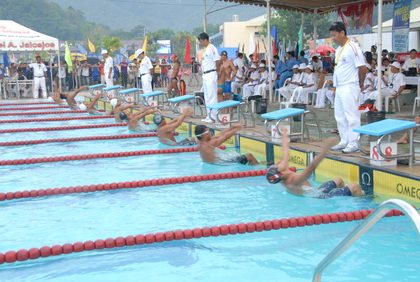SUMMARY
This is AI generated summarization, which may have errors. For context, always refer to the full article.

MANILA, Philippines – As inhabitants of a country with more than 7,000 islands, Filipinos are no strangers to swimming.
So when the Americans introduced swimming as a sport to the Philippines in the 1900s, Filipinos were quick to learn, and by 1912, a number of local swimmers had emerged from different parts of the country who competed against each other in championships organized by the Americans.
Numerous athletes who excelled in the sport also appeared, as the training and promotion of the swimming spread in schools and universities nationwide.
The year 1928 saw the greatest achievement of a Filipino in the sport. Nicknamed the “Ilocano Shark,” Teofilo E. Yldelfonso won the Philippines its first Olympic medal by winning bronze in the 200 m breaststroke event at the 1928 Olympics in Amsterdam, the Netherlands.
He repeated this feat in the 1932 Olympics in Los Angeles, California, when he won his second bronze medal, becoming the first Filipino to win multiple medals in the Olympics. However, his performance declined in the next games. He died fighting for the country during World War II.
The war brought a pause to swimming competitions, as with the other sports. But when it ended, the Filipinos started another wave in its showcase of swimming excellence.
The first Asian Games held in New Delhi, India in 1951 saw Filipinos Artemio Salamat and Jacinto Cayco win gold medals for the 200m and 100m breaststroke events, respectively.
Decline
In the following games held in Manila in 1954, the emergence of outstanding Filipina swimmers were remarkable, with Haydee Coloso and Jocelyn von Giese both winning gold medals.
In the years that followed, swimming tournaments grew, and programs that provided opportunities for Pinoy swimmers to develop and enhance their skills were organized and promoted.
Unfortunately, the performance of Filipino swimmers before, particularly in the 1950s, has been unmatched since. In fact, since the 2002 Asian Games, not a representative has taken home any medal for the sport. The same decline can be observed in the Southeast Asian Games, where our country’s delegation placed last in medal tally in all the swimming events in Indonesia last year.
This was a big disappointment, considering that the country had consistently placed in the top 3 over-all medal tally in the 2005, 2007 and 2009 SEA Games.
Call for reforms
The unfortunate state of the sport in the country has been the subject of cries for reform. Philippine Swimming League president Susan Papa and sports enthusiast and former senator Nikki Coseteng have led these calls for change.
In the Manila Times, Coseteng blamed the mismanagement and defective leadership of the organization that manages swimming in the country, the Philippine Aquatic Sports Association (PASA). She said that the PASA has “no serious effort” in training and developing young swimmers in the country.
She particularly resented the discrimination of PASA to its non-athletes, despite ” the fact that non-PASA swimmers are considered the best in the country today, based on the medal finishes they have been bringing home from international competitions,” she said in the report.
Despite the challenges faced by Filipino swimmers, the promise of a brighter future for the sport still lingers. The fact that it remains a sport where a number of our young athletes thrive and flourish makes it worth the attention and support it deserves. – Rappler.com
Add a comment
How does this make you feel?
There are no comments yet. Add your comment to start the conversation.